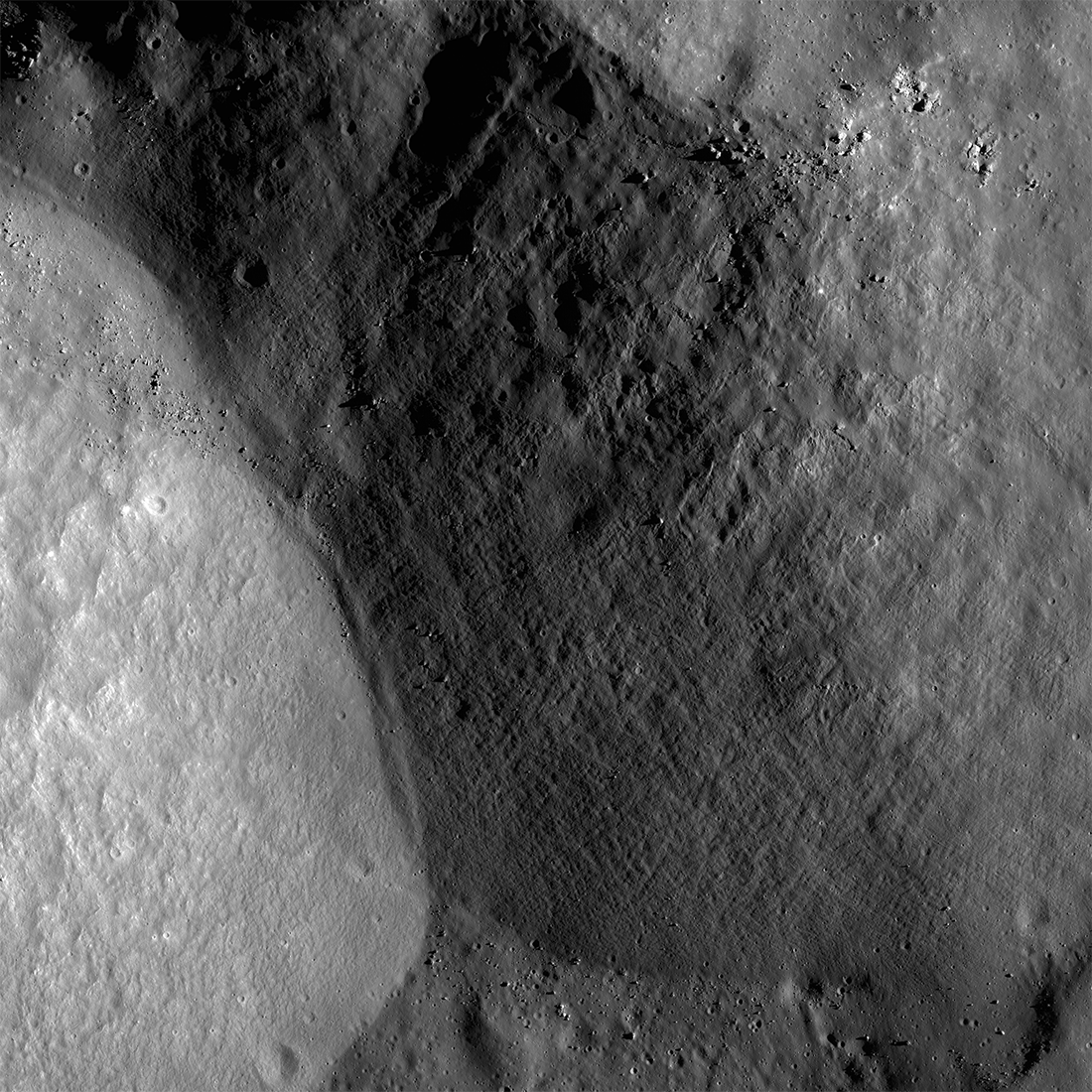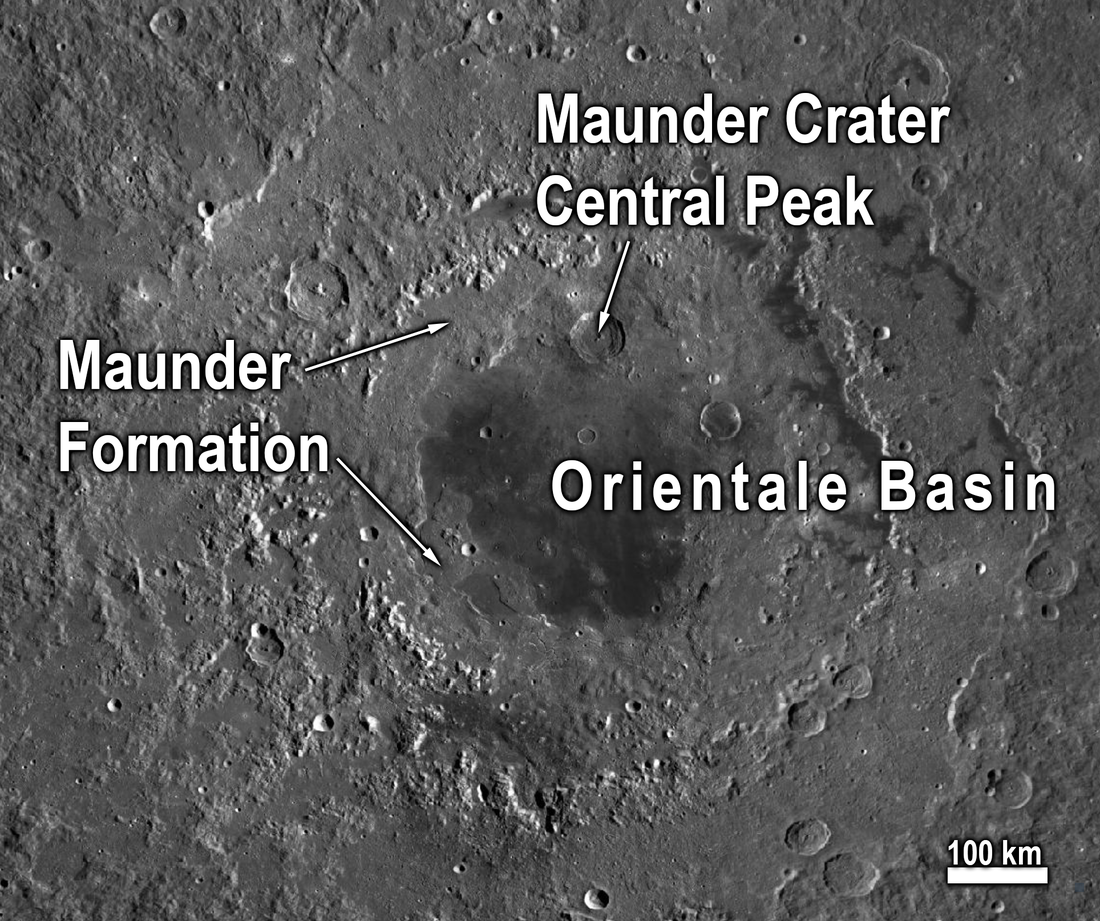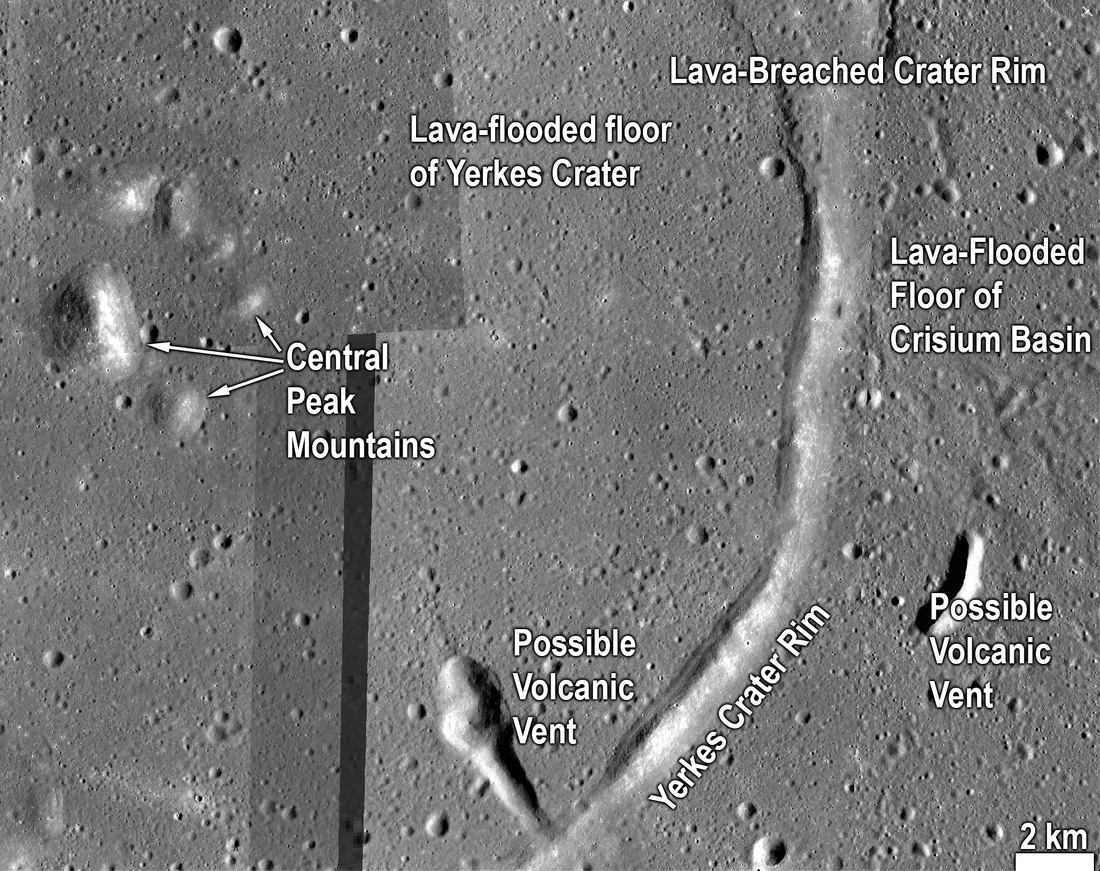
The largest basins on the Moon formed from violent impacts that literally rocked the Moon to its core. In the minutes following the impacts, the interiors of these thousand-kilometer-scale basins were flooded with molten rock, except that this “lava” was not erupted from the lunar interior, but rather melted in the extreme heat and pressure of the impact. When these impact melt deposits cooled into a solid, the mineral crystals locked in certain amounts of radioactive elements. These radioactive elements serve as a clock, and the crystallization of the rock from a melt started the clock ticking. To find out how old these basins are, future astronauts or robotic landers will have to collect and return portions of these impact melt deposits to Earth, or perform sophisticated analyses on the rocks while on the lunar surface.
Why should we care how old the basins are? One answer is that our own Earth was once just as covered with basins as the Moon is now, except that our home world’s active geology erased most of them. What is more, these basins formed on Earth around the time of life’s first emergence, roughly 3.5 to 4 billion years ago. By learning how old the basins on the Moon are—and thus when Earth was rocked by huge impacts—we can piece together the impact environment at this extremely exciting time on early Earth.
The image above shows part of a mountain inside a crater inside a basin. Orientale basin, which straddles the Moon’s nearside–farside divide, is the youngest large basin anywhere on the Moon. Its impact melt deposit—the Maunder Formation—is easily discernable and accessible. Maunder Crater’s central mountainous peak lifts high above the surrounding moonscape. Central peaks form in an amazing way. When large impact events (those that result in craters larger than about 20 km in diameter) occur on the Moon, the incredible pressures compress the surface, which then rebounds to cause mountains to grow in just a few minutes. Just imagine watching 1000-meter-tall mountains rising out of a sea of impact melt in such a short time! As incredible as it sounds, this type mountain building was a common occurrence across the Moon. Central peaks expose rock from deep underground, exposing once-buried layers, including impact melt deposits of older basins. These central peaks could be locations where future human and robotic explorers could collect age-datable rocks to find out when the larger basins formed. While Orientale has widespread impact melt deposits exposed at the surface, and thus sampling Orientale impact melt uplifted in the central peak of Maunder isn’t necessary to obtain an age for Orientale, Maunder and Orientale serve as useful analogs to other basins with less accessible impact melt sheets.

Impact melt sheets at older basins are not easily discernable—either they have had eons of craters form on top of them, beating up and diluting their impact melt—or, the melt deposits are buried under thick flood basalts that erupted and filled the basins. Thus, sampling rocks exposed within central peaks of craters that formed in conjunction with the melt sheets may be a good way to find out the age of some basins. For example, the figure below shows the lava-flooded Yerkes Crater, which, like Maunder in Orientale, sits atop the impact melt sheet of the giant Crisium basin. In this case, mare basalts buried nearly all of Crisium’s impact melt, and thus the discovery of Crisium impact melt exposed by Yerkes crater represents an exciting find: a place we could go to learn the age of Crisium, and by extension, what the impact rate was during an important time for the Earth–Moon system.

The full story of Crisium’s impact melt sheet deposit is available in an article from the LROC team that was recently published in the Journal of Geophysical Research – Planets:
Runyon, K. D., Moriarty, D., Denevi, B. W., Greenhagen, B. T., Morgan, G., Young, K. E., Cohen, B. A., van der Bogert, C. H., Hiesinger, H., Jozwiak, L. M. (2019). Impact Melt Facies in the Moon's Crisium Basin: Identifying, Characterizing, and Future Radiogenic Dating. Journal of Geophysical Research: Planets. doi: 10.1029/2019JE006024.
Scroll around the full-resolution, zoomable view of Maunder crater:
Related Featured Images:
Amazing Orientale Peaks and Valleys
NAC Anaglyph: Maunder Central Peak
Crisum's Constellation Region of Interest
Published by Brett Denevi on 19 February 2020